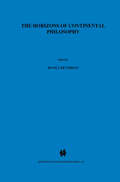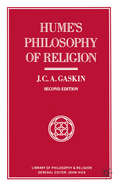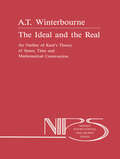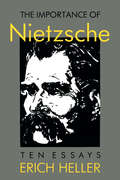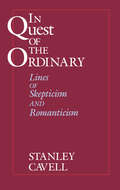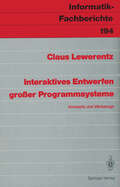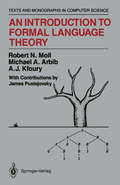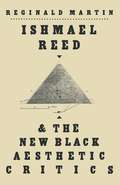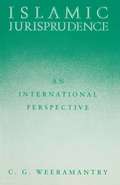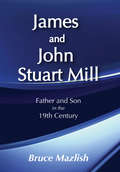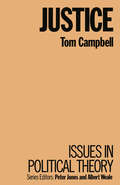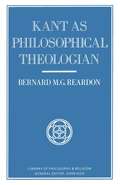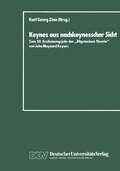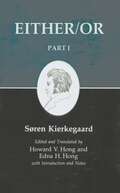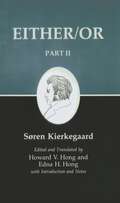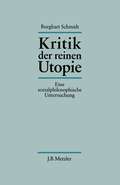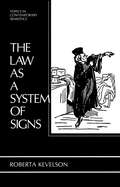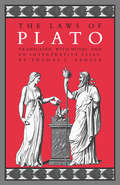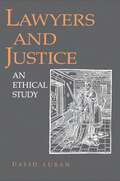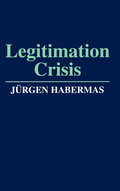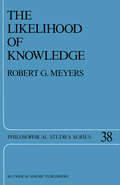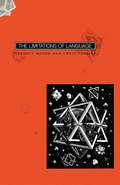- Table View
- List View
The Horizons of Continental Philosophy: Essays on Husserl, Heidegger, and Merleau-Ponty (Martinus Nijhoff Philosophy Library #30)
by Hugh J. Silverman, Algis Mickunas, Theodore Kisiel and Alphonso Lingislacan. Barthes. Jakobson. Horkheimer. Adorno. Gadamer. Ricoeur. Foucault. Deleuze. Derrida. lyotard. Vattimo. Kofman. and Irigaray are also part of that outer horizon of continental philosophy. The purpose of this volume however is to establish that space within the core of continental philosophy - specifically in relation to the work of Husserl. Heidegger. and Merleau-Ponty -- and to move out to some of its various horizons. In some cases. these horizons are set by the history of philosophy. in others by newer directions in contemporary philosophy. and in others by alternative modes of philosophizing. The horizons also appear in areas as diverse as epistemology and the philosophy of science. metaphysics. philosophical psychology. and aesthetics. Furthermore. these limits are set by the relationships between philosophy and other disciplines such as psychology. communication theory. and the arts. Nevertheless the volume is organized around each of the three major figures in the phenomenological core of continental philosophy. The twelve essays provide important investigations into current research -- they represent the range and skills of contemporary work in relation to Husserl. Heidegger. and Merleau-Ponty. In themselves however they indicate advances in philosophical research and are hardly simple commentaries on these three figures. Husserl. Heidegger. and Merleau-Ponty constitute texts on the basis of which phenomenology is taken to its limits -- and even beyond.
Hume’s Philosophy of Religion (Library of Philosophy and Religion)
by J.C.A. GaskinHume's Philosophy of Religion brings together for the first time the whole range of Hume's immensely important critique of religion. The major concern is with a clear discussion and presentation of philosophical issues wherever they occur in Hume's writings, but items in the history of ideas, questions of interpretation and biographical details are introduced when they contribute to an understanding of Hume's position. Already reviewed as a standard work on Hume on religion and as a good general introduction to Hume's thought, this new edition has been extensively revised and extended. '...it is hard to imagine how a study of Hume on religion could have been at once more comprehensive, accurate, readable and scholarly than this...it is strongly to be recommended to all who have occasion to study or to teach Hume in colleges or universities.' W.D.Hudson, Expository Times.
The Ideal and the Real: An Outline of Kant’s Theory of Space, Time and Mathematical Construction (Nijhoff International Philosophy Series #37)
by A. WinterbourneMany students coming to grips with Kant's philosophy are understandably daunted not only by the complexity and sheer difficulty of the man's writings, but almost equally by the amount of secondary literature available. A great deal of this seems to be - and not only on first reading - just about as difficult as the work it is meant to make more accessible. Any writer deliberately setting out to provide an authentically introductory text thus faces a double problem: how to provide an exegesis which would capture some of the spirit of the original, without gross and misleading over-simplification; and secondly, how to anchor the argument in the best and most imaginative secondary literature, yet avoid the whole project appearing so fragmented as to make the average book of chess openings seem positively austere. Until fairly recently, matters were made even more difficul t, in that commentaries on Kant were very often of a whole work, say, The Critique of Pure Reason, with the result that students would have to struggle through a very great deal of material indeed in order to feel any confidence at all that they had begun to understand the original writings. Recently, things have changed somewhat. There are now excellent commentaries on "Kant's Analytic", "Kant's Analogies" etc. . We have also seen, (at least as reflected in book titles), a resurgence of interest in what is perhaps the most controversial and far-reaching Kantian claim, viz.
The Importance of Nietzsche
by Erich HellerIn this book, one of the most distinguished scholars of German culture collects his essays on a figure who has long been one of his chief preoccupations. Erich Heller's lifelong study of modern European literature necessarily returns again and again to Friedrich Nietzsche. Nietzsche prided himself on having broken with all traditional ways of thinking and feeling, and once even claimed that he would someday be recognized for having ushered in a new millennium. While acknowledging Nietzsche's radicalism, Heller also insists on the continuity of the story in which he does indeed occupy a central place. By considering Nietzsche in relation to Goethe, Rilke, Wittgenstein, Yeats, and others, Heller shows the philosopher's ambivalence toward the tradition he inherited as well as his profound effect on the thought and sensibility of those who followed him. It is hardly an exaggeration to say, as Heller does in his first essay, that Nietzsche is to many modern writers and thinkers—including Mann, Musil, Kafka, Freud, Heidegger, Jaspers, Gide, and Sartre—what St. Thomas Aquinas was to Dante: the categorical interpreter of a world, which they contemplate imaginatively and theoretically without ever much upsetting its Nietzschean structure. Thus it is Nietzsche's thought, so pervasively present in the themes of modernity, that gives coherence and unity to Heller's essays. What emerges from them is that, despite his iconoclastic declarations and unorthodox philosophical practices, Nietzsche deals with the human spirit's persistent concerns. His questions remain urgent, and even the answers, in all their contradictoriness, possess the commanding force of his inquiry. An example is the incompatibility of the famous extremes, the teaching of the Übermensch and the Eternal Recurrence of All Things. These cancel each other out and yet grow from the same intellectual and spiritual roots, as is shown lucidly and cogently by one of Heller's most forceful essays, "Nietzsche's Terrors: Time and the Inarticulate." In fathoming the depth of this contradiction, Heller at the same time reveals the importance of Nietzsche for those who seek to understand the wellsprings of the epoch's disquiet, turmoil, and creativity.
In Quest of the Ordinary: Lines of Skepticism and Romanticism
by Stanley CavellThese lectures by one of the most influential and original philosophers of the twentieth century constitute a sustained argument for the philosophical basis of romanticism, particularly in its American rendering. Through his examination of such authors as Emerson, Thoreau, Poe, Wordsworth, and Coleridge, Stanley Cavell shows that romanticism and American transcendentalism represent a serious philosophical response to the challenge of skepticism that underlies the writings of Wittgenstein and Austin on ordinary language.
Interaktives Entwerfen großer Programmsysteme: Konzepte und Werkzeuge (Informatik-Fachberichte #194)
by Claus LewerentzIm Rahmen des Forschungsprojektes IPSEN (Incremental Programming Support Environment) wurden Konzepte zum Bau hochgradig interaktiver und integrierter Software-Entwicklungsumgebungen erarbeitet und ihre Brauchbarkeit in einer Prototyp-Implementierung nachgewiesen. Die wesentlichen Charakteristika des IPSEN-Ansatzes sind der hohe Grad an Integration verschiedener Software-Werkzeuge und -Dokumente und der Einsatz eines einheitlichen Modellierungs- und Realisierungsmechanismus für Software-Entwicklungsumgebungen. Software-Dokumente werden intern als attributierte Graphstrukturen modelliert, und Werkzeuge werden als Graphprozessoren über solchen Strukturen aufgefaßt. Die vorliegende Arbeit, die über einen Teil dieses Projektes berichtet, beschäftigt sich in erster Linie mit Konzepten und Werkzeugen für den Arbeitsbereich "Programmieren im Großen", d.h. mit dem Entwerfen von Programmsystemen auf der Ebene von Teilsystemen, Modulen, Modulschnittstellen und -beziehungen. Es wird ein Modulkonzept zusammen mit einer entsprechenden Entwurfssprache vorgestellt und diskutiert, wie damit beschriebene Systemarchitekturen in vorgegebene Programmiersprachen abgebildet werden können. Hinzu kommen Konzepte zur Beschreibung und Verwaltung von Varianten und Revisionen von Systemkomponenten. Die Erstellung technischer Dokumentation und die Verwaltung eines Projektteams werden ebenfalls behandelt. Zu jedem Arbeitsbereich werden Syntax-gesteuerte Editoren, Analyse- und Transformationswerkzeuge vorgestellt, die integriert zusammenarbeiten und sich dem Benutzer auf einheitliche Weise präsentieren. Die Realisierung dieser Werkzeuge gemäß dem "Graphentechnik"-Ansatz wird kurz dargestellt, im Anhang der Arbeit findet sich eine formale Beschreibung des verwendeten Graphgrammatik-Kalküls.
An Introduction to Formal Language Theory (Monographs in Computer Science)
by Robert N. Moll Michael A. Arbib A.J. KfouryThe study of formal languages and of related families of automata has long been at the core of theoretical computer science. Until recently, the main reasons for this centrality were connected with the specification and analy sis of programming languages, which led naturally to the following ques tions. How might a grammar be written for such a language? How could we check whether a text were or were not a well-formed program generated by that grammar? How could we parse a program to provide the structural analysis needed by a compiler? How could we check for ambiguity to en sure that a program has a unique analysis to be passed to the computer? This focus on programming languages has now been broadened by the in creasing concern of computer scientists with designing interfaces which allow humans to communicate with computers in a natural language, at least concerning problems in some well-delimited domain of discourse. The necessary work in computational linguistics draws on studies both within linguistics (the analysis of human languages) and within artificial intelligence. The present volume is the first textbook to combine the topics of formal language theory traditionally taught in the context of program ming languages with an introduction to issues in computational linguistics. It is one of a series, The AKM Series in Theoretical Computer Science, designed to make key mathematical developments in computer science readily accessible to undergraduate and beginning graduate students.
Islamic Jurisprudence: An International Perspective
by C.G. WeeramantryIslamic jurisprudence is a much misunderstood system. The misunderstanding is due to lack of information and to centuries of prejudice. This book seeks to present information, not at present available in a single work, on the pioneering efforts of Islamic jurists to develop a comprehensive body of human rights, principles and practice, as well as a corpus of international law principles. The attempt to develop such international law principles long anticipated any similar work in other legal or cultural systems. Human rights doctrine based upon the Qu'ran and the Sunna of the Prophet was expressed in terms which will strike the reader as surprisingly modern. In international law, Islamic treatises anticipated the work of Grotius by eight centuries. It is hoped that this systematic exposition, not attempted before in such detail, will help considerably in reducing misunderstanding and the resulting tensions, as well as being of considerable value to the Islamic world. The work will be of interest not only to lawyers, but also to philosophers, historians, sociologists, political scientists and students of international affairs.
James and John Stuart Mill
by Bruce MazlishThe story of James and John Stuart Mill is one of the great dramas of the 19thcentury. In the tense yet loving struggle of this extraordinarily influential father and son, we can see the genesis of evolution of Liberal ideas-about love, sex, and women, wealth and work, authority and rebellion-which ushered in the modern age. The result of more than a decade of research and reflection, this is a study of the relationship between James Mill, the self-made utilitarian philosopher who tried (with only partial success) to shape his son in his own image. Mazlish integrates psychology and intellectual history as part of his larger and continuing effort to spur deeper understanding of the character, limitations, and possibilities of the social sciences.John Stuart Mill's rebellion against a joyless, loveless upbringing, one in strict accordance with the principles of Utilitarianism, was rooted ina powerful Oedipal struggle against his father's authority. Mazlish describes this rebellion as playing an important role in the genesis of classical nineteenth century liberalism. Behind this intellectual development were the women in Mills' life: Harriet the mother, never mentioned by her son in his autobiography, and Harriet Taylor, with whom Mill lived in a scandalous, if chaste, ménage a trois. It was this long relationship which informed his famous essay 'The Subjection of Women,' one of the most eloquent feminist statements ever written. A work of brilliant historical research and psychological insights, James and John Stuart Mill shows how the nineteenth-century struggle of fathers and sons shaped the social transformation of society.
James and John Stuart Mill
by Bruce MazlishThe story of James and John Stuart Mill is one of the great dramas of the 19thcentury. In the tense yet loving struggle of this extraordinarily influential father and son, we can see the genesis of evolution of Liberal ideas-about love, sex, and women, wealth and work, authority and rebellion-which ushered in the modern age. The result of more than a decade of research and reflection, this is a study of the relationship between James Mill, the self-made utilitarian philosopher who tried (with only partial success) to shape his son in his own image. Mazlish integrates psychology and intellectual history as part of his larger and continuing effort to spur deeper understanding of the character, limitations, and possibilities of the social sciences.John Stuart Mill's rebellion against a joyless, loveless upbringing, one in strict accordance with the principles of Utilitarianism, was rooted ina powerful Oedipal struggle against his father's authority. Mazlish describes this rebellion as playing an important role in the genesis of classical nineteenth century liberalism. Behind this intellectual development were the women in Mills' life: Harriet the mother, never mentioned by her son in his autobiography, and Harriet Taylor, with whom Mill lived in a scandalous, if chaste, ménage a trois. It was this long relationship which informed his famous essay 'The Subjection of Women,' one of the most eloquent feminist statements ever written. A work of brilliant historical research and psychological insights, James and John Stuart Mill shows how the nineteenth-century struggle of fathers and sons shaped the social transformation of society.
Kant as Philosophical Theologian (Library of Philosophy and Religion)
by Bernard M.G. ReardonThis book sets out to present Kant as a theological thinker. His critical philosophy was not only destructive of 'natural' theology, with its attempt to prove divine existence by logical argument, it also left no room for 'revelation' in the traditional sense. Yet Kant himself, who was brought up in Lutheran pietism, certainly believed in God, and could fairly be described as a religious man. But he held that religion can be based only on the moral consciousness, and in his last major work, Religion within the Limits of Reason Alone - discussed here in detail - he interpreted Christianity purely in terms of moral symbolism. It would be no exaggeration to claim that Kant's influence has been decisive for modern theology.
Keynes aus nachkeynesscher Sicht: Zum 50. Erscheinungsjahr der „Allgemeinen Theorie” von John Maynard Keynes
by Karl Georg ZinnDie fünfzigjährige Wirkungsgeschichte der "Allgemeinen Theorie der Beschäf tigung, des Zinses und des Geldes" von John Maynard Keynes bildete den An laß eines wirtschaftstheoretischen Kolloquiums, das am 23. und 24. Oktober 1986 auf Einladung des Instituts für Wirtschaftswissenschaft der Rheinisch Westfälischen Technischen Hochschule, Aachen, stattfand. Die hier veröffentlichten Kolloquiumsbeiträge wurden zum Teil von den Auto ren überarbeitet und ergänzt. Die Reihenfolge entspricht der der Referate des Kolloquiums. Eine besondere Gruppierung der Abhandlungen erschien nicht sinnvoll, da es sich jeweils um selbständige und abgeschlossene Texte handelt, die nicht direkt aufeinander Bezug nehmen. Die Einleitung beschränkt sich darauf, die einzelnen Beiträge kurz vorzustellen, ohne daß Verbindungen zwischen ihnen hergestellt oder Unterschiede in dem jeweiligen Zugang zur Theorie Keynes' herausgehoben werden. Unvoll kommenheiten, mögliche Irrtümer oder falsche Gewichtung von Thesen und Ar gumenten in der einleitenden Präsentation der Aufsätze sind ausschließlich vom Herausgeber zu verantworten. Den Autoren sei für die Bereitschaft gedankt, ihre Referate der Veröffent lichung verfügbar zu machen. 4 EINLEITUNG Das Interludium der monetaristischen Wirtschaftspolitik scheint sich in der zweiten Hälfte der 1980er Jahre seinem Ende zuzuneigen. Damit dürfte auch die monetaristische Theorie an schulbiIdendem Einfluß verlieren. Ob damit allerdings auch eine Rückkehr des Keynesianismus als wirtschaftspolitischer Orientierungslehre verbunden sein wird, läßt sich noch nicht erkennen. Sollte eine wirtschaftspolitische Keynes-Renaissance eintreten, so dürfte allerdings sicher sein, daß es sich um einen Keynesianismus neuer Prägung handeln wird, und zwar in zweifacher Hinsicht.
Kierkegaard's Writing, III, Part I: Either/Or
by Søren Kierkegaard Howard V. Hong Edna H. HongSøren Kierkegaard, the nineteenth-century Danish philosopher rediscovered in the twentieth century, is a major influence in contemporary philosophy, religion, and literature. He regarded Either/Or as the beginning of his authorship, although he had published two earlier works on Hans Christian Andersen and irony. The pseudonymous volumes of Either/Or are the writings of a young man (I) and of Judge William (II). The ironical young man's papers include a collection of sardonic aphorisms; essays on Mozart, modern drama, and boredom; and "The Seducer's Diary." The seeming miscellany is a reflective presentation of aspects of the "either," the esthetic view of life. Part II is an older friend's "or," the ethical life of integrated, authentic personhood, elaborated in discussions of personal becoming and of marriage. The resolution of the "either/or" is left to the reader, for there is no Part III until the appearance of Stages on Life's Way. The poetic-reflective creations of a master stylist and imaginative impersonator, the two men write in distinctive ways appropriate to their respective positions.
Kierkegaard's Writing, III, Part I: Either/Or
by Søren Kierkegaard Howard V. Hong Edna H. HongSøren Kierkegaard, the nineteenth-century Danish philosopher rediscovered in the twentieth century, is a major influence in contemporary philosophy, religion, and literature. He regarded Either/Or as the beginning of his authorship, although he had published two earlier works on Hans Christian Andersen and irony. The pseudonymous volumes of Either/Or are the writings of a young man (I) and of Judge William (II). The ironical young man's papers include a collection of sardonic aphorisms; essays on Mozart, modern drama, and boredom; and "The Seducer's Diary." The seeming miscellany is a reflective presentation of aspects of the "either," the esthetic view of life. Part II is an older friend's "or," the ethical life of integrated, authentic personhood, elaborated in discussions of personal becoming and of marriage. The resolution of the "either/or" is left to the reader, for there is no Part III until the appearance of Stages on Life's Way. The poetic-reflective creations of a master stylist and imaginative impersonator, the two men write in distinctive ways appropriate to their respective positions.
Kierkegaard's Writings IV, Part II: Either/Or
by Søren Kierkegaard Howard V. Hong Edna H. HongSøren Kierkegaard, the nineteenth-century Danish philosopher rediscovered in the twentieth century, is a major influence in contemporary philosophy, religion, and literature. He regarded Either/Or as the beginning of his authorship, although he had published two earlier works on Hans Christian Andersen and irony. The pseudonymous volumes of Either/Or are the writings of a young man (I) and of Judge William (II). The ironical young man's papers include a collection of sardonic aphorisms; essays on Mozart, modern drama, and boredom; and "The Seducer's Diary." The seeming miscellany is a reflective presentation of aspects of the "either," the esthetic view of life. Part II is an older friend's "or," the ethical life of integrated, authentic personhood, elaborated in discussions of personal becoming and of marriage. The resolution of the "either/or" is left to the reader, for there is no Part III until the appearance of Stages on Life's Way. The poetic-reflective creations of a master stylist and imaginative impersonator, the two men write in distinctive ways appropriate to their respective positions.
Kierkegaard's Writings IV, Part II: Either/Or
by Søren Kierkegaard Howard V. Hong Edna H. HongSøren Kierkegaard, the nineteenth-century Danish philosopher rediscovered in the twentieth century, is a major influence in contemporary philosophy, religion, and literature. He regarded Either/Or as the beginning of his authorship, although he had published two earlier works on Hans Christian Andersen and irony. The pseudonymous volumes of Either/Or are the writings of a young man (I) and of Judge William (II). The ironical young man's papers include a collection of sardonic aphorisms; essays on Mozart, modern drama, and boredom; and "The Seducer's Diary." The seeming miscellany is a reflective presentation of aspects of the "either," the esthetic view of life. Part II is an older friend's "or," the ethical life of integrated, authentic personhood, elaborated in discussions of personal becoming and of marriage. The resolution of the "either/or" is left to the reader, for there is no Part III until the appearance of Stages on Life's Way. The poetic-reflective creations of a master stylist and imaginative impersonator, the two men write in distinctive ways appropriate to their respective positions.
The Law as a System of Signs (Topics in Contemporary Semiotics)
by Roberta KevelsonEven if Peirce were well understood and there existed· general agreement among Peirce scholars on what he meant by his semiotics, or philosophy of signs, the undertaking of this book-wliich intends to establish a theoretical foundation for a new approach to understanding the interrelations of law, economics, and politics against referent systems of value-would be a risky venture. But since such general agreement on Peirce's work is lacking, one's sense of adventure in ideas requires further qualification. Indeed, the proverbial nerve for failure must in any case be attendant. If one succeeds, one has introduced for further inquiry the strong possibility that should our social systems of law, economics, and politics---our means of interpersonal transaction as a whole-be understood against the theoretical back ground of a dynamic, "motion-picture" universe that is continually becoming, that is infinitely developing and changing in response to genuinely novel elements that emerge as existents, then the basic concepts of rights, resources, and reality take on new dimensions of meaning in correspondence with n-dimensional, infinite value judgments or truth-like beliefs which one holds. If such a view, as Peirce maintained, were possible and tenable not only for philosophy but as the basis for action and interaction in the world of human experience and practical affairs, one would readily say that risk taking is a small price for the realization of such possibility.
The Laws of Plato
by PlatoThe Laws, Plato's longest dialogue, has for centuries been recognized as the most comprehensive exposition of the practical consequences of his philosophy, a necessary corrective to the more visionary and utopian Republic. In this animated encounter between a foreign philosopher and a powerful statesman, not only do we see reflected, in Plato's own thought, eternal questions of the relation between political theory and practice, but we also witness the working out of a detailed plan for a new political order that embodies the results of Plato's mature reflection on the family, the status of women, property rights, criminal law, and the role of religion and the fine arts in a healthy republic. "Because it succeeds in being both literal and comprehensive, it is by far superior to any translation available. By reproducing dramatic detail often omitted, such as oaths, hesitations, repetitions, and forms of address, Pangle allows the reader to follow the dialogue's interplay between argument and dramatic context. . . . Pangle's translation captures the excitement and the drama of Plato's text."—Mary P. Nichols, Ancient Philosophy "Pangle's achievement is remarkable. . . . The accompanying interpretive essay is an excellent distillation of a dialogue three times its size. The commentary is thoughtful, even profound; and it amply demonstrates the importance of reading Plato carefully and from a translation that is true to his language."—Patrick Coby, American Political Science Review
Lawyers and Justice: An Ethical Study (PDF)
by David LubanThe law, Holmes said, is no brooding omnipresence in the sky. "If that is true," writes David Luban, "it is because we encounter the legal system in the form of flesh-and-blood human beings: the police if we are unlucky, but for the (marginally) luckier majority, the lawyers." For practical purposes, the lawyers are the law. In this comprehensive study of legal ethics, Luban examines the conflict between common morality and the lawyer's "role morality" under the adversary system and how this conflict becomes a social and political problem for a community. Using real examples and drawing extensively on case law, he develops a systematic philosophical treatment of the problem of role morality in legal practice. He then applies the argument to the problem of confidentiality, outlines an affordable system of legal services for the poor, and provides an in-depth philosophical treatment of ethical problems in public interest law.
Legitimation Crisis
by Jürgen HabermasIn this enormously influential book, Jurgen Habermas examines the deep tensions and crisis tendencies which underlie the development of contemporary Western societies and develops a powerful analysis of the legitimation problems faced by modern states. Habermas argues that Western societies have succeeded to some extent in stabilizing the economic fluctuations associated with capitalism, but this has created a new range of crisis tendencies which are expressed in other spheres. States intervene in economic life and attempt to regulate markets, but they find themselves confronted by increasing and often conflicting demands. As individuals become increasingly disillusioned, the state is faced with the possibility of a mass withdrawal of loyalty or support - a 'legitimation crisis'. Widely recognized as a classic of contemporary social and political analysis, Legitimation Crisis sheds light on a range of issues which are central to current debates, from the decline of class conflict and the disillusionment with established political institutions to the crisis of the welfare state. It remains essential reading for students of sociology, politics and the social sciences generally.
The Likelihood of Knowledge (Philosophical Studies Series #38)
by R.G. MeyersIt is convenient to divide the theory of knowledge into three sets of problems: 1. the nature of knowledge, certainty and related notions, 2. the nature and validi ty of the sources of knowledge, and 3. answers to skeptical arguments. The first set includes questions such as: What is it to know that something is the case? Does knowledge imply certainty? If not, how do they differ? What are the con ditions of knowledge? What is it to be justified in accepting something? The sec ond deals with the ways in which knowledge can be acquired. Traditional sources have included sources of premisses such as perception, memory, in trospection, innateness, revelation, testimony, and methods for drawing conclu sions such as induction and deduction, among others. Under this heading, philosophers have asked: Does innateness provide knowledge? Under what con ditions are beliefs from perception, testimony and memory justified? When does induction yield justified belief? Can induction itself be justified? Debates in this area have sometimes led philosophers to question sources (e. g. , revela tion, innateness) but usually the aim has been to clarify and increase our understanding of the notion of knowledge. The third class includes the peren nial puzzles taught to beginning students: the existence of other minds, the problem of the external world (along with questions about idealism and phenomenalism), and more general skeptical problems such as the problem of the criterion. These sets of questions are related.
The Limitations of Language
by Terence Moore Chris Carling Anna Larsson Trevor Cribben MerrillThis book explores the relation between language and our senses and emotions, taking readers into domains as diverse as wine-tasting, marriage guidance counselling, medical training and face recognition. The authors suggest that language is capable of both confusing and clarifying.
